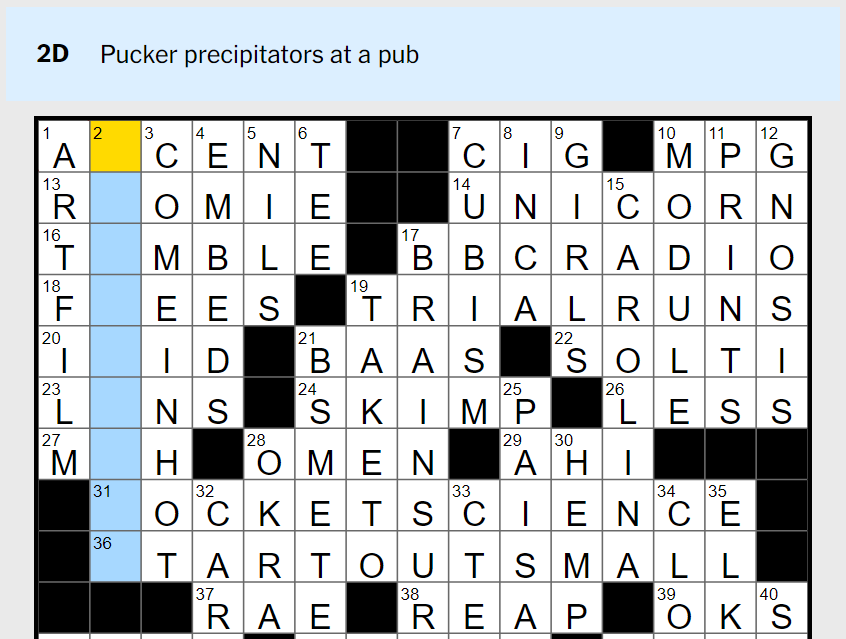Like a New Zealander excited when the country is mentioned out loud in overseas media or just actually included on a map, I’m always interested when beer pops up in unexpected places. Last Friday’s NYT crossword had ipa among its solutions, which itself isn’t uncommon — the crowded design of American crosswords mean they reuse some three-letter words a lot — but the clue specifically referencing hazy struck me, and I wondered if that was new, and what (if anything) it might mean.
It turns out — gloriously but also probably inevitably — that some folks meticulously track these things. And while I hope it’s not too anticlimactic to say right away that, no, this wasn’t the first mention of a hazy IPA as such, the only other one (so far) was just over a year ago, and that clue was Beverage with a “New England” variety.1 But there were fifty puzzles before that, dating back to 2012,2 which lead people to ipa in various ways, often with a simple Hoppy brew or Bitter beer, briefly — but sometimes name-dropping specific brands (Sierra Nevada, Lagunitas, and Sam Adams), or alluding to the fact there are other sub-types with Bar offering with “double” and “triple” varieties, or with dubious lines like Alternative to a pilsner. The crossword-solving public weren’t assumed or expected to know about hazies until May 2022,3 and that seems like some kind of sign that it’s crossed into a new state of acceptance or legitimacy or something.
Brut IPA never made it to that stage, and Cold IPA hasn’t either.4 sour has never been mentioned as a kind of beer, with its drinks-related clues always aiming at a whisky sour instead. Older, more-established terms pretty frequently show up among the clues; the hints for porter include several beer references mixed in with baggage-handling ones, and plenty of puzzles include lager, all the way back to the 1940s — in the early decades it’s treated as a straightforward synonym for “beer”, more recent compilers have made mention of Oktoberfest or Pilsner or good old Foster’s to flesh out their own contributions. So maybe we can add “has it been in the Times crossword?” to the tests for whether something new has become a thing.
Anyway. Just a passing observation (and a little digging). In years gone by, this probably would’ve been a few tweets. But as things have changed for the worse — and then worse still in a terrible parade of nonsense — over there, I feel like I’d rather hang out here.
POSTSCRIPT: And then, just two weeks later, the NYT put out a whole bonus crossword on the ‘occasion’ of India Pale Ale Day — and absolutely bloody none of the clues had anything to do with beer, of any kind. I have no idea what to make of that. (But I did find that in 2011 there was an International Beer Day one, which was full of suitable clues.)
POST-POSTSCRIPT: “Pucker precipitators at a pub” appeared on the 3rd of February 2024 and seems to be the debut of sour beer in the world of the NYT. A little strange (if this is any mark of “being a thing”) to come after Hazy IPA, but still; welcome. My favourite crossword blogger (of course I have a favourite) seemed to rate it as a pretty easy clue, so perhaps it really was overdue.
- Which to me seems way harder. But maybe it’s different when your newspaper is headquartered in a state that actually borders on New England itself.
- Before that, the “IPA” clues were about the pronunciation system, or, way back, an obscure anthropological factoid about a people from Argentina.
- And so a good five years, at least, after it was noteworthy enough to be “controversial” in our weird little subculture.
- Although, to be fair, “West Coast” has never been deemed worthy of incorporation in a puzzle directly, at least by name as a subtype, though maybe that just reflects the fact that (for normal people) it’s the default, the descriptive and brand-specific references all lean that way, after all.


